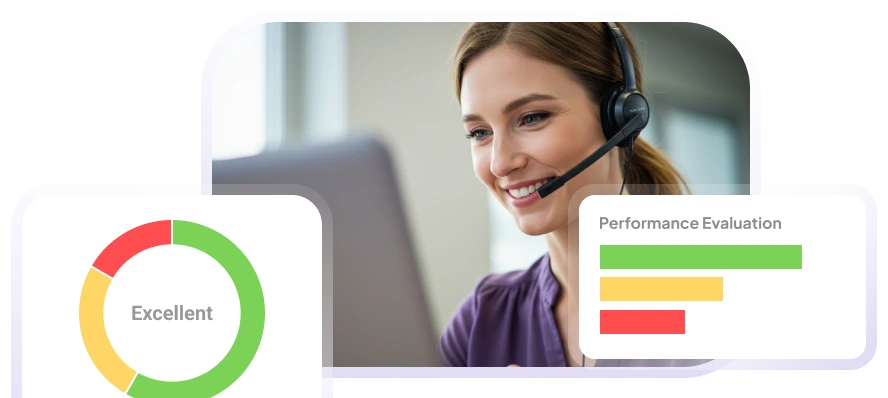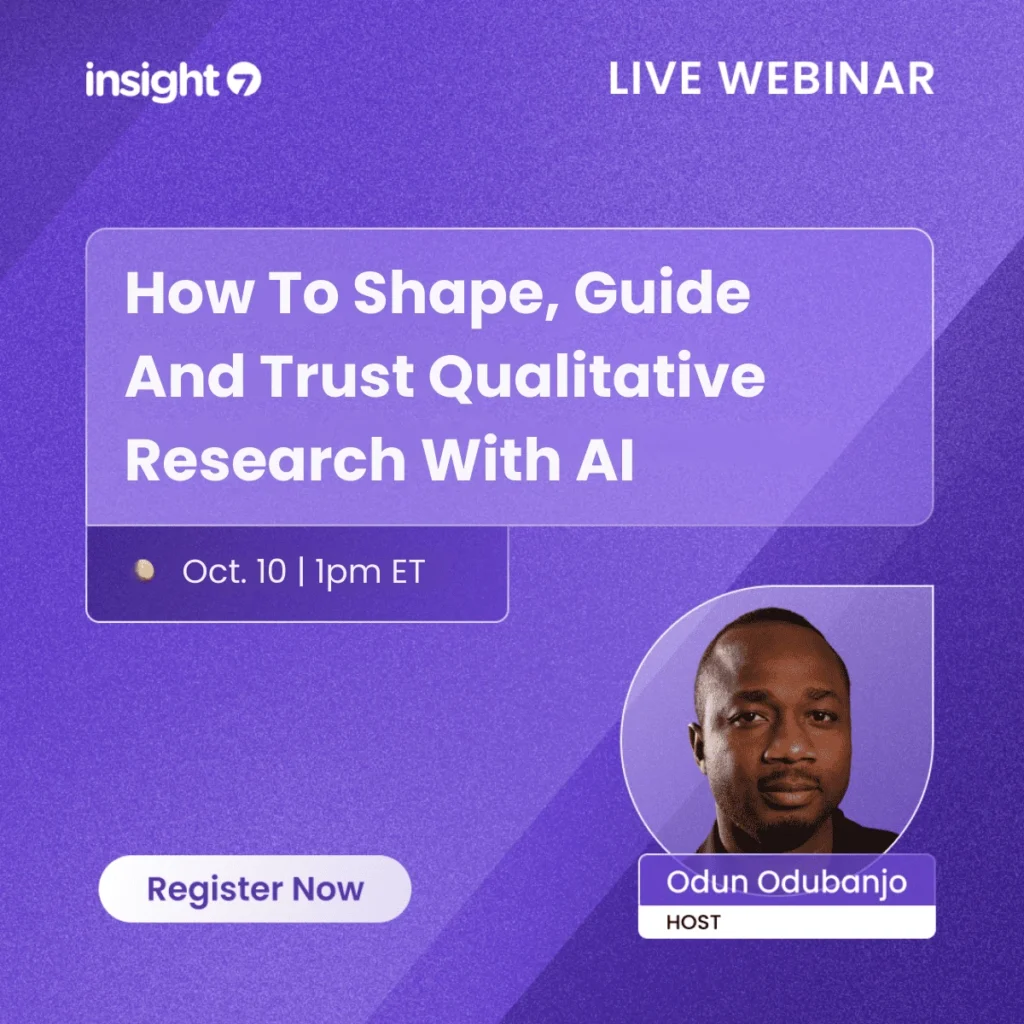6 Top Qualitative Data Analysis Programs
-
Bella Williams
- 10 min read
Understanding the landscape of qualitative data analysis can often feel overwhelming. With an increasing number of programs available, identifying the right tools for your research needs becomes essential. Focused on delivering high-quality insights, premier qualitative analytics programs aid researchers in efficiently managing data derived from text, audio, and video formats.
These tools not only streamline the tedious processes of transcription and analysis but also enhance the overall quality of insights obtained. As we delve into the top programs designed for qualitative data analysis, we'll explore their capabilities and how they can transform research into actionable knowledge. Join us on this journey to discover the best resources that can elevate your qualitative research efforts.
What Makes a Qualitative Data Analysis Program Premier?
A premier qualitative analytics program stands out due to several key characteristics that enhance the research experience. First, it prioritizes user-friendliness, allowing researchers to navigate through data without steep learning curves. This accessibility ensures that both seasoned analysts and novices can efficiently conduct studies and derive meaningful insights. Secondly, powerful automation tools play a crucial role in streamlining tasks, minimizing manual work such as transcription and analysis. This saves time and increases overall productivity.
Moreover, a focus on collaboration within the platform enhances team dynamics. Such programs enable multiple users to work simultaneously on projects and share findings seamlessly. High standards in data security further solidify trust among users, ensuring that sensitive information is protected throughout the research process. Lastly, premier qualitative analytics also incorporate advanced AI capabilities, improving the accuracy and depth of insights derived from raw data. These elements collectively define what makes a qualitative data analysis program genuinely premier.
Key Features to Look for in Premier Qualitative Analytics
When exploring premier qualitative analytics, several key features set the best tools apart. First, automation capabilities significantly reduce the time spent on manual transcription and analysis, allowing teams to work more efficiently. Look for platforms that integrate AI to streamline these processes without compromising quality.
Next, consider the versatility of data formats supported by the software. A robust program should handle various types of qualitative data, including text, audio, and video, to capture rich insights. Additionally, advanced reporting tools are essential for translating raw data into actionable insights in a user-friendly manner. Lastly, security features must meet high standards to protect sensitive customer information, ensuring compliance and trustworthiness. By prioritizing these essential characteristics, organizations can select the most effective qualitative analytics solutions for their research needs.
Importance of Choosing the Right Tool
Choosing the right qualitative data analysis tool is essential for effective research outcomes and meaningful insights. A suitable program can significantly streamline the process, enabling researchers to analyze interviews and focus group discussions more efficiently. When researchers opt for a tool like Premier Qualitative Analytics, they enhance their workflow and reduce the risk of errors associated with manual data handling.
Additionally, the right tool fosters collaboration among team members, allowing them to share insights seamlessly. In contrast, improper tool selection can lead to inconsistent results, slow turnaround times, and difficulty in extracting actionable insights. With a well-chosen qualitative analysis program, researchers can transform raw data into reliable information that informs decision-making and drives projects forward. Overall, careful consideration of analytical tools is paramount for achieving robust qualitative findings that add value to any research effort.
Exploring the Top Qualitative Data Analysis Programs
In the realm of qualitative research, finding the right tools to analyze data can significantly enhance the quality of insights gathered. Many teams struggle with the tedious tasks of transcribing and analyzing text, audio, and video data manually. This is where premier qualitative analytics come into play, serving as essential tools for researchers. By automating insights and reporting, these programs streamline workflows, allowing teams to focus on uncovering deeper narratives hidden within their data.
Selecting the best qualitative data analysis program involves considering various factors. Key features to look for include user-friendly interfaces, robust data management capabilities, and advanced analytical tools. Furthermore, effective collaboration features are essential for teams working together on projects. The top programs often integrate machine learning to enhance accuracy and eliminate biases, thereby ensuring a reliable analysis of qualitative data. By adopting these top tools, researchers can improve efficiency and derive richer insights that drive informed decision-making.
Premier Qualitative Analytics Tools: Comprehensive Review
When exploring Premier Qualitative Analytics tools, organizations find themselves facing essential choices. This section offers a comprehensive review of the top programs available for qualitative data analysis. Focusing on text, audio, and video data, these tools help streamline workflows, automate insights, and facilitate reporting. With the right analytics tools, researchers can efficiently manage their qualitative data while ensuring high standards in their output.
The potential challenges in qualitative research often involve manual transcription and analysis, which can be time-consuming and prone to biases. By utilizing advanced technologies, these premier tools enhance the quality of insights generated. Understanding the strengths and functionalities of each program can empower teams to select the best solutions for their specific needs in qualitative analysis. This guide aims to provide clarity in navigating these options, ensuring that users can uncover impactful insights efficiently and effectively.
NVivo: The Industry Standard
In the realm of qualitative data analysis, one program consistently stands out as the industry standard. Recognized for its robust capabilities, it provides researchers with a sophisticated platform for analyzing complex data sets, including text, audio, and video. This software excels in transforming vast amounts of qualitative data into actionable insights, making it an essential tool for professionals engaged in research across various sectors.
Its user-friendly interface allows for seamless navigation, facilitating the coding process and enhancing collaboration among team members. Furthermore, this program incorporates AI-driven features that help streamline tasks such as transcription and data analysis. These capabilities enable researchers to focus more on interpretation rather than spending countless hours on manual data handling. Ultimately, as a premier qualitative analytics solution, it sets a benchmark for excellence in the industry, empowering users to extract meaningful insights from their data efficiently.
MAXQDA: Versatility in Qualitative Research
MAXQDA stands out in the realm of qualitative research due to its impressive versatility. Researchers can analyze various types of data, including text, audio, and video, making it ideal for diverse projects. This program aids users in automating the transcription process, thereby saving significant time and effort. As qualitative data analysis requires meticulous attention and high-quality standards, users benefit from enhanced efficiency while maintaining analytical rigor.
Additionally, MAXQDA is equipped with a range of tools that facilitate collaboration among team members. Users can easily share insights, allowing for more integrated research efforts. The program also emphasizes a user-friendly interface, ensuring that researchers can focus on their data without being hindered by complex software. By streamlining qualitative research processes, this software provides researchers with the ability to generate meaningful insights, reinforcing its position as a premier qualitative analytics choice.
Other Noteworthy Qualitative Data Analysis Programs
When exploring qualitative data analysis programs, it's essential to consider other noteworthy options that may cater to various research needs. These programs often bring unique features that appeal to researchers in different domains. They not only streamline the process but also enhance the quality of insights derived from qualitative data.
Many of these programs offer user-friendly interfaces and robust analytical tools for text, audio, and video data. A few noteworthy programs include options that provide advanced coding features and customizable reporting capabilities. Additionally, some software excels in integrating AI technology to automate data analysis, saving researchers valuable time while maintaining accuracy. Ultimately, each program has strengths and weaknesses, making it crucial for teams to analyze their specific requirements before choosing a solution. Exploring these alternatives allows researchers to find the perfect fit for their qualitative analytics needs and facilitates better decision-making.
ATLAS.ti: Sophisticated Analysis Capabilities
When exploring premier qualitative analytics, one discovers remarkably advanced analysis capabilities. Users can generate comprehensive datasets that allow for detailed inquiries, such as the creation of personas based on diverse data sources. This encompasses the ability to ask complex questions, summarize findings, and extract valuable insights that directly impact project outcomes.
Moreover, the program offers dynamic features like multi-project search capabilities, which enable users to harmonize insights across various datasets. Visual tools, such as journey maps, enhance the experience by allowing users to map processes effectively, making it easier to identify areas for improvement. Templates tailored to different sectors provide a structured approach, saving time and enriching analysis. By integrating these sophisticated functionalities, users can elevate their qualitative research, yielding actionable insights that drive decision-making and strategy formulation.
Dedoose: Mixed Methods Made Easy
Dedoose stands out as a premier tool for mixed methods research, combining qualitative and quantitative data analysis seamlessly. Its user-friendly interface allows researchers to jump right in without requiring extensive training or technical expertise. This accessibility is a key aspect that empowers casual and seasoned researchers alike to make the most of their data.
With Dedoose, you can effortlessly transcribe videos, manage data organization, and analyze transcripts in bulk. Users appreciate the straightforward approach that allows them to conduct effective analyses without the need for a steep learning curve. The platform’s design prioritizes ease of use, enabling users to focus on insights rather than getting bogged down by complex tools. For those looking to simplify their qualitative analytics, Dedoose offers a compelling, efficient solution that embodies the concept of making mixed methods truly easy for everyone.
Quirkos: Intuitive and Beginner-Friendly
For those seeking a premier qualitative analytics solution, the focus on intuitive design makes this tool notably accessible. The platform is crafted with beginners in mind, allowing users to dive into qualitative data analysis without the steep learning curve often associated with such software. It offers core workflows—such as easy transcription of videos or direct analysis of transcripts—that can be initiated immediately upon logging in.
The simplicity does not compromise functionality. Users can upload and analyze data in bulk, streamlining the process for those managing extensive datasets. This tool eliminates the need for expert-level training or demo videos, ensuring that anyone can take full advantage of its features right away. With such a user-friendly approach, even those new to qualitative research will find themselves comfortable and effective in their analyses.
QDA Miner: Power and Simplicity Combined
When it comes to premier qualitative analytics, the balance of power and simplicity is crucial. QDA Miner excels at transforming complex data into visual narratives, enabling users to uncover key insights effortlessly. The platform facilitates the analysis of datasets by allowing users to label and tag information effectively. This process aids in crafting concise reports and visual summaries that present major findings succinctly.
Additionally, the intelligent querying capabilities streamline the exploration of data, letting users request comprehensive summaries or even generate buyer personas. By combining ease of use with robust analytical tools, QDA Miner ensures that users can extract value from qualitative data without feeling overwhelmed. The integration of features such as direct report generation into presentations also highlights its focus on practical application. In the realm of qualitative data analysis, QDA Miner stands out as an essential tool that embodies both potency and intuitiveness.
Conclusion: Choosing Your Premier Qualitative Analytics Tool
Selecting your premier qualitative analytics tool is a critical decision that can significantly enhance your research outcomes. With various options available, consider what features matter most to your specific needs. Look for user-friendly platforms that allow easy analysis of interview transcripts and other qualitative data. You want a tool that not only simplifies the process but also empowers all users, regardless of their experience level.
Evaluate the programs based on their functionalities, ease of use, and the quality of insights they provide. Your ideal choice should blend robust analytics with intuitive design, making it accessible for everyone involved in the research. Ultimately, the right tool will facilitate deeper understanding and more meaningful conclusions from your qualitative data.
Final Thoughts on Premier Qualitative Analytics
In today's fast-paced research environment, Premier Qualitative Analytics stands out as a vital asset for organizations striving to glean insights from qualitative data. This approach prioritizes the analysis of text, audio, and video by emphasizing the importance of identifying themes and patterns. Teams can significantly streamline their workflows by automating insights and reporting, thus freeing them from tedious manual transcription and analysis.
The effectiveness of qualitative analytics lies not only in its efficiency but also in its potential to enhance the quality of insights gathered. By minimizing bias and employing advanced technologies, researchers can achieve a higher standard in their data analysis. Ultimately, embracing Premier Qualitative Analytics can elevate the research process, ensuring that valuable insights are both accurate and actionable. Organizations that harness the power of qualitative data will be better equipped to understand their audiences and make informed decisions, paving the way for strategic growth and innovation.
Making an Informed Decision
Making an informed decision about qualitative data analysis programs is crucial for effective research outcomes. Start by considering key factors such as usability, feature set, and support services. It's essential to evaluate how intuitive each program is to use, especially for team members who may not be tech-savvy. Compare the functionalities offered by different tools to ensure they align with your research goals.
Next, don't overlook the importance of available support and resources. A program that offers excellent customer support can make a significant difference during implementation and troubleshooting. Finally, consider user reviews and community feedback to gauge overall satisfaction. By paying attention to these aspects, you can find a premier qualitative analytics solution that meets your needs and adds value to your research process. This will empower your team to make insightful decisions backed by robust data analysis.
Future Trends in Qualitative Data Analysis Programs
The future of Premier Qualitative Analytics is set to witness significant innovations driven by advancements in technology. As qualitative data analysis programs evolve, we can expect increased integration of artificial intelligence and machine learning. These technologies will enhance the efficiency and accuracy of data transcription and analysis, allowing researchers to spend more time interpreting insights rather than managing data.
Another key trend is the growing demand for real-time analytics. Researchers will focus on tools that allow for immediate feedback and adjustments during studies. Accessibility will also become paramount, as more user-friendly software enters the market. Additionally, the incorporation of multi-modal data sources, such as video and audio, will enrich analyses. Understanding these trends is crucial, as they pave the way for creating more comprehensive, user-centric research methodologies in the field of qualitative data analysis.







